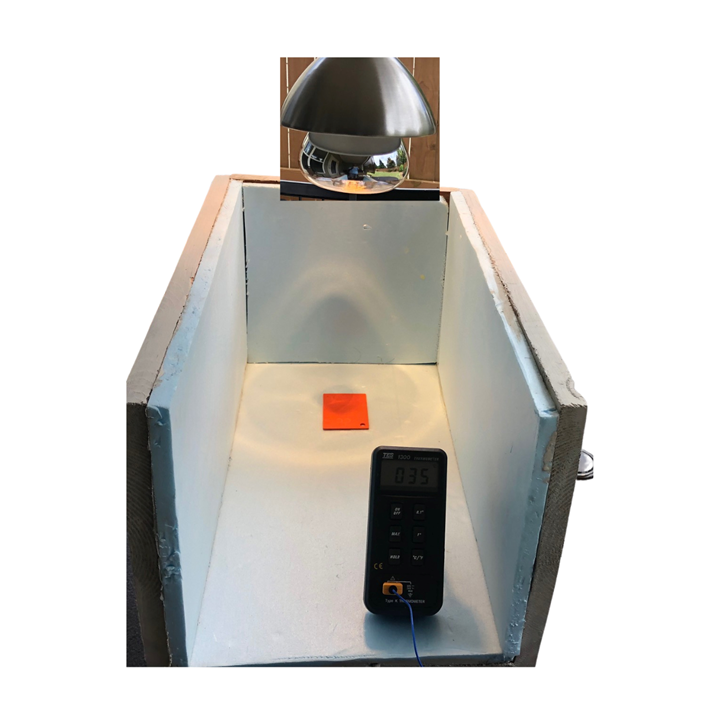Chroma Color Adds Analytical Capabilities to its Arsenal of Infrared-Reflecting Colorant Technology for Outdoor Applications
Chroma’s ASTM testing apparatus for measuring temperature rise ensures color concentrates meet criteria for reducing heat build-up in dark plastics.

Chroma Color is now offering manufacturers of exterior products customized color formulations that reduce Total Solar Reflectance (TSR)—a technology that minimizes the heat build-up on the surface of dark colored plastic products. TSR is expressed as a percentage between 0 and 100%. These rates indicate a products ability to reflect solar energy. With years of experience in providing processors with infrared-reflecting color concentrates for exterior durable goods that must withstand elements for an extended period, the company is now even better equipped with in-house analytical capabilities.
To ensure a processor’s color concentrates meet the criteria for reducing heat build-up on dark plastics, Chroma’s technical team uses the ASTM D-4803-97 method to measure the temperature increase. This testing provides useful comparative data on heat build-up of various polymers and color formulations. Carbon black plastic color typically has the highest rating of heat buildup. Therefore, this ASTM test method compares the heat buildup of a customer’s chosen color against a carbon black plastic control sample.
Related Content
-
Prices of All Five Commodity Plastics On the Way Up
Despite earlier anticipated rollover in prices for most of the volume commodity resins, prices were generally on the way up for all going into the third month of first quarter.
-
Prices for PE, PS, PVC, PET Trending Flat; PP to Drop
Despite price increase nominations going into second quarter, it appeared there was potential for generally flat pricing with the exception of a major downward correction for PP.
-
Polymer Showdown — PC/ABS vs. PC/PBT — May the Best Material Win
First in a series, experts from plastics engineering consultancy The Madison Group will pit leading thermoplastics against each other to see how they differ in processing characteristics, chemical resistance, thermal and mechanical performance, and more.




